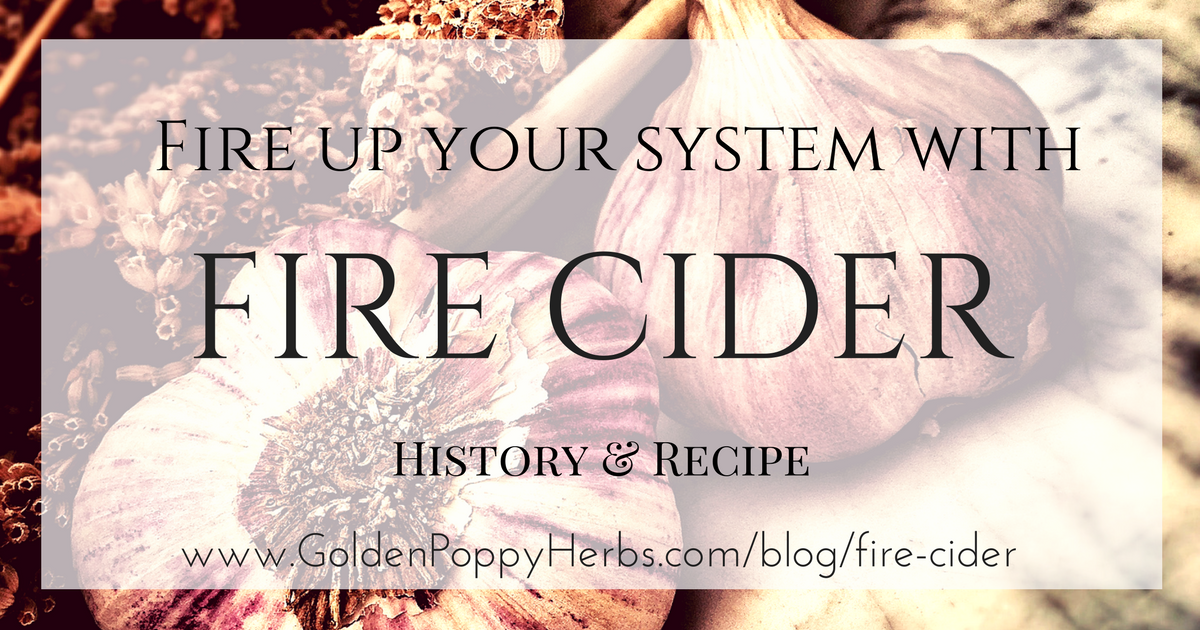 By: Ashley Noack, CCH Fire Cider is a traditional folk recipe prepared as the season transforms into fall and beyond. Fire Cider can be taken as a daily tonic into the winter months to warm the spirit and ward off sickness. The invigorating brew is a mixture of apple cider vinegar, spicy roots and peppers, culinary herbs, onions, garlic, and a bit of honey. Herbal alterations of medicinal roots, barks, and berries provide an additional surge of nourishment and strength. The mixture aids in the dissolution of colds, flus, and other seasonal discomforts by clearing the sinuses, aiding digestion, promoting circulation, and stimulating the immune system. The simplicity and potency of Fire Cider makes it an invaluable ally for the oncoming season.
By: Ashley Noack, CCH Fire Cider is a traditional folk recipe prepared as the season transforms into fall and beyond. Fire Cider can be taken as a daily tonic into the winter months to warm the spirit and ward off sickness. The invigorating brew is a mixture of apple cider vinegar, spicy roots and peppers, culinary herbs, onions, garlic, and a bit of honey. Herbal alterations of medicinal roots, barks, and berries provide an additional surge of nourishment and strength. The mixture aids in the dissolution of colds, flus, and other seasonal discomforts by clearing the sinuses, aiding digestion, promoting circulation, and stimulating the immune system. The simplicity and potency of Fire Cider makes it an invaluable ally for the oncoming season.
“TRADITIONS NOT TRADEMARKS”
In recent years, Fire Cider has become a highly discussed subject among herbalists. Herbalism in the United States remains a folk tradition. This means that our practice exists free of the restrictions found in other healing modalities, restrictions that would otherwise homogenize the types of services or goods exchanged. While herbalists remain varied in their differences of approach, all agree that herbal medicine is people’s medicine. A great body of herbal knowledge comes from the experience gathered and shared from across generations for the benefit of the common folk. The general focus of this wisdom is to aid our wellbeing in tandem with the rhythm of the seasons and the routine of daily life. The practice of preparing Fire Cider is one such seasonal remedy. Recent attempts to trademark the name of this traditional recipe were received by the herbal community with an uproar of disbelief. Resources, such as the Free Fire Cider blog, have responded in resistance to the trademark by educating the public about the consequences of this precedent. If we are to retain the diversity of our ancestral healing roots, it is important that individuals and communities continue to have access to these recipes for personal or commercial use.PREPARING YOUR FIRE CIDER
Like any traditional remedy, there is no ‘right’ way to prepare Fire Cider. Crafting your own version can be a creative and empowering process. Let’s begin with the original recipe shared by herbalist, author, and educator Rosemary Gladstar, who first coined the phrase ‘Fire Cider’ decades ago.
Materials:
Other common ingredients include: Jalapeño peppers, chili pepper flakes, black peppercorn, turmeric, cinnamon, orange or lemon juice. You may also consider the following tonic herbs as additions: Oregano, Cinnamon, Echinacea, Elder Berry, Rose Hips, Ginger, Rosemary, Sage, and Thyme. These herbs may also be incorporated as infused vinegars or infused honeys. Really you can put whatever you want in to your recipe, that's part of the magic. Preparation:
- ½ gal. mason jar with lids
- cheesecloth
- chopping knife
- cutting board
- cheese grater
- ½ C grated fresh horseradish root
- ½ C or more fresh chopped onions
- ¼ C or more fresh chopped garlic
- ¼ C or more grated fresh ginger root
- Chopped fresh or dried cayenne (whole or powdered)
- Raw, organic apple cider vinegar
- Combine all your ingredients in a mason jar and place a piece of cheesecloth under the lid. (Note: The cheesecloth will help prevent the metal lid from corroding from the vinegar exposure.)
- Seal the lid tightly over the cloth, and store your jar in a cool, dark place for one month. (Of course if you don't want to wait you can pick up a bottle of our Fire Up Your System Tonic)
- Shake the mixture regularly and offer it your gratitude.
- When ready, strain the liquid through the cheesecloth and enjoy as desired. You can continue to store your Fire Cider in a cool, dry place for several months or in a refrigerator for longer.
Ashley Noack, CCH is a Fort Collins-based clinical and community herbalist. As a holistic practitioner, she provides practical, intuitive plant wisdom, lifestyle and dietary guidance, body education, and energetic healing. Her playful, heart-centered approach serves others to embrace their magical, wild selves through honoring natural rhythms, practicing transformative self-care, and cultivating authentic relationships.



